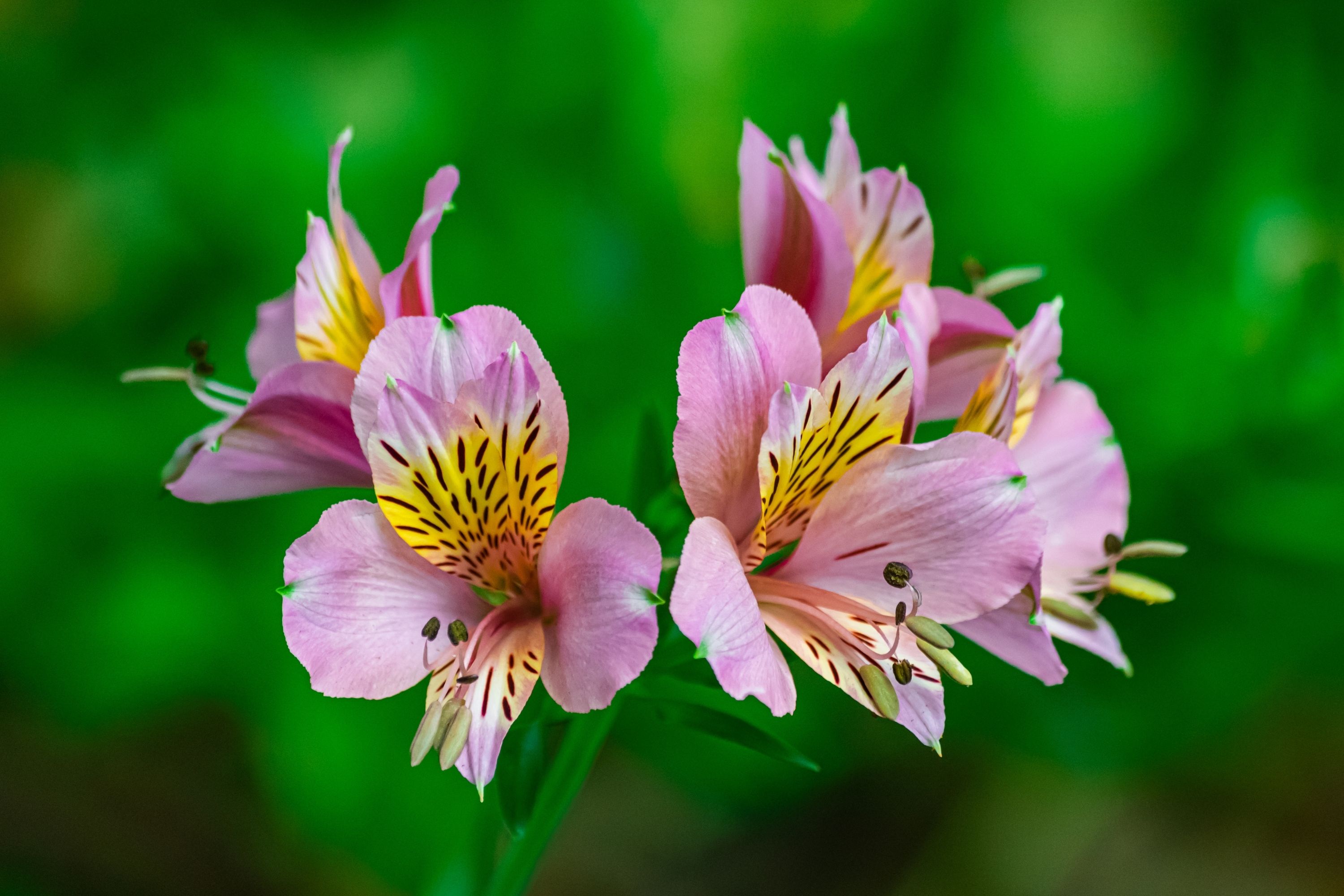Peruvian lily
(Alstroemeria ligtu)

Description
Alstroemeria ligtu, also known as the Peruvian lily or lily of the Incas, is a stunningly beautiful flowering plant that belongs to the Alstroemeriaceae family. It is native to South America, specifically the Andes Mountains in Peru, Chile, and Brazil. This plant is well-known for its striking blooms that come in a range of colors, including white, pink, red, orange, yellow, and lavender. In this article, we will explore everything there is to know about Alstroemeria ligtu, from its physical characteristics to its uses in medicine and landscaping. Physical Characteristics Alstroemeria ligtu is a herbaceous perennial plant that can grow up to 3 feet tall. It has an extensive root system with long, fleshy rhizomes that store nutrients and water. The stems are erect and sturdy, and they branch out at the top to form clusters of flowers. The leaves are lance-shaped and grow alternately along the stem. They are dark green and can be up to 6 inches long. The flowers of Alstroemeria ligtu are its most striking feature. They are trumpet-shaped and have six petals that are arranged in two layers. The outer petals are broad and come in a range of colors, from pale pink to deep red. The inner petals are smaller and have darker spots or stripes on them. The flowers bloom in the spring and summer and can last for several weeks. Cultivation Alstroemeria ligtu is relatively easy to cultivate and care for. It prefers well-drained soil that is rich in organic matter. It also requires a moderate amount of water and prefers to be kept evenly moist. This plant thrives in full sunlight, but it can tolerate some shade. Propagation Alstroemeria ligtu can be propagated by dividing the rhizomes in the spring or fall. To do this, carefully dig up the plant and separate the rhizomes with a sharp knife. Each rhizome should have at least one healthy shoot and a few roots. Replant the divisions in well-drained soil and water thoroughly. Uses Alstroemeria ligtu has a range of uses in medicine and landscaping. Medicinal Uses In traditional Peruvian medicine, Alstroemeria ligtu is used to treat a variety of ailments, including stomach ulcers, fever, and menstrual cramps. The plant contains several compounds that have been found to have anti-inflammatory and analgesic properties, including triterpenoids, flavonoids, and alkaloids. Landscaping Uses Alstroemeria ligtu is a popular ornamental plant that is often used in landscaping. Its striking blooms and long flowering period make it an excellent choice for adding color and interest to gardens, patios, and balconies. The plant is also suitable for use in cut flower arrangements and is a popular choice for bouquets and centerpieces. In landscaping, Alstroemeria ligtu is often used in borders, rock gardens, and mixed planting beds. It pairs well with other perennials, such as daylilies, daisies, and phlox. In Conclusion Alstroemeria ligtu is a stunningly beautiful plant that is relatively easy to cultivate and care for. Its striking blooms, long flowering period, and range of colors make it an excellent choice for adding color and interest to gardens and landscapes. In addition, the plant has a range of medicinal uses and contains compounds that have anti-inflammatory and analgesic properties. If you are looking for a low-maintenance, eye-catching plant that is versatile and easy to grow, Alstroemeria ligtu is an excellent choice.
Taxonomic tree:







